Exploring the Traditional Tamilnadu Saree Style Every Woman Should Know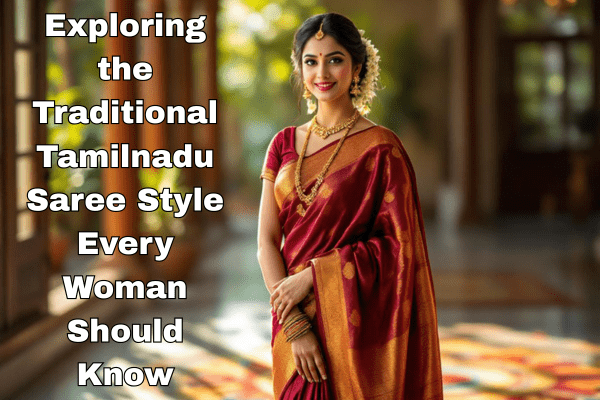
Introduction
Ever stood in front of your wardrobe, staring at that gorgeous Tamilnadu saree, wondering if you could possibly pull off that traditional drape without looking like you’re playing dress-up? You’re not alone.
The six-yard wonder from South India isn’t just fabric—it’s centuries of culture wrapped into a single garment that somehow manages to make every woman look like royalty.
By the end of this guide, you’ll know exactly how to master the traditional Tamilnadu saree style that celebs and regular women alike have been rocking for generations. No more YouTube tutorials on endless repeat.
But here’s what most people get wrong about the Madisaru style that could be making your drape look amateur instead of authentic…
The Rich Heritage of Tamilnadu Sarees
The Cultural Significance Behind Traditional Draping
The Tamilnadu saree style isn’t just about draping fabric—it’s a cultural identity woven with tradition.
Tamil women wear their sarees in a distinct way, with front pleats and a neatly tucked pallu over the left shoulder.
This unique style reflects values of modesty, grace, and everyday practicality.
Passed down through generations, the Tamilnadu saree style carries stories of heritage and pride in every fold.
Evolution of Tamilnadu Saree Styles Through Centuries
The Tamilnadu saree style has come a long way—from simple cotton wraps worn centuries ago to today’s luxurious silk creations.
Ancient temple carvings reveal early versions with minimal draping, focusing more on ease and movement.
During the Chola period, front pleats and more structured drapes became popular, adding elegance to everyday wear.
That classic influence still shines today, with modern designers reimagining the Tamilnadu saree style for the runway.
Regional Variations Within the State
Travel across Tamil Nadu and you’ll notice that the South style saree isn’t one-size-fits-all—it beautifully adapts to each region.
In the Kongu region, women wear shorter pleats to move freely while working on farms.
Chettinad women go for grander looks with extra pleats, reflecting their rich cultural traditions.
Coastal areas prefer lightweight fabrics and simpler pallus—practical and perfect for the humid weather, showing how the South style saree evolves with lifestyle and climate.
How Tamilnadu Sarees Differ from Other South Indian Styles
The Tamilnadu saree style is more than just a way of draping—it’s a reflection of tradition, identity, and everyday practicality.
From temple towns to coastal villages, the South style saree varies beautifully across regions, each telling its own story.
In Tamil Nadu, the pleats are neatly arranged in front, and the pallu is gracefully draped over the left shoulder—a style rooted in elegance and ease.
Unlike other South Indian drapes, the Tamilnadu saree style stands out for its vibrant colours, rich borders, and deep cultural symbolism passed down through generations.
Essential Elements of the Traditional Tamilnadu Saree Look
A. Signature Fabrics and Weaves to Recognize
When it comes to the Tamilnadu saree style, Kanchipuram silk reigns supreme—loved for its luxurious feel and unbeatable durability.
A true South style saree, it features bold contrast borders that are woven separately and then joined—a signature detail you won’t miss.
Crafted using pure mulberry silk and genuine gold zari, each Kanchipuram saree is a labor of love and tradition.
These aren’t just garments—they’re heirlooms, often passed down from mothers to daughters, carrying generations of stories in every thread
B. Distinctive Color Combinations and Their Meanings
In the Tamilnadu saree style, every color tells a story—deep maroons symbolize wealth, while mustard yellows are tied to auspicious beginnings.
A signature of any South style saree is the bold contrast between the saree’s body and its border—more than a visual treat, it’s cultural storytelling woven in silk.
Shades like peacock blue and emerald green are often worn to celebrate fertility, joy, and fresh starts—especially in wedding rituals and festivals.
These vibrant colour choices aren’t just tradition—they’re timeless expressions of Tamil identity passed lovingly from one generation to the next.
C. Characteristic Border and Pallu Designs
The beauty of the Tamilnadu saree style lies in the intricate borders and story-rich pallus that celebrate Tamil heritage.
A classic South style saree often features temple borders inspired by kovil (temple) architecture—honoring centuries of devotion and artistry.
Designs like mayilkan (peacock eyes) and hamsa (swan motifs) aren’t just pretty—they’re symbolic, carrying cultural meaning and grace.
The pallu is where the magic unfolds, often showcasing woven tales from epics like the Ramayana or Mahabharata—turning your saree into a walking masterpiece.
D. The 9-Yard Wonder: Understanding the Madisaru
The Madisaru, a signature Tamilnadu saree style, is all about grace and tradition—draped entirely by hand with no pins or pleats stitched in.
Unlike typical drapes, this South style saree wraps the nine-yard fabric around the body to create natural trouser-like pleats—perfect for moving freely during rituals.
Often worn by Tamil Brahmin women during weddings and religious ceremonies, it stands as a proud symbol of modesty and strength.
This timeless drape isn’t just a fashion choice—it’s a living tradition, blending spirituality, culture, and womanhood in one powerful garment.
E. The Role of Zari Work and Embellishments
One standout feature of the Tamilnadu saree style is its use of real gold zari (korvai), which gleams with age and adds timeless value to the drape.
Temple-inspired motifs like peacocks, mangoes, and classic geometric borders bring deep cultural storytelling to every fold.
Today’s South style saree designs blend tradition with trend—think subtle stone work, delicate hand embroidery, and lightweight textures.
These sarees are more than festive wear—they’re wearable art that connects generations while staying effortlessly elegant.
Kanjeevaram Silk Saree
Different types of Tamilnadu Saree and its Fabric
| Saree Type | Origin/Region | Fabric | Key Features | Best For |
|---|---|---|---|---|
| Kanjivaram (Kanchipuram) | Kanchipuram | Pure Silk + Zari | Rich texture, contrast borders, intricate gold zari work | Weddings, festivals, grand events |
| Chettinad Cotton | Chettinad | Cotton | Bold colors, stripes/checks, thick woven borders | Daily wear, summer, traditional events |
| Madisar | Worn by Brahmin women | Silk or Cotton | 9 yards, unique drape forming pant-style pleats | Weddings, rituals, religious ceremonies |
| Kovai Cora Cotton | Coimbatore (Kovai) | Silk-Cotton Blend | Lightweight, bright hues, simple yet elegant | Office, semi-formal occasions |
| Thirubuvanam Silk | Thanjavur District | Pure Silk | Softer than Kanjivaram, subtle sheen, jacquard designs | Festive wear, temple visits |
| Sungudi Saree | Madurai | Cotton | Tie-dye dots, zari borders, vibrant shades | Summer wear, casual traditional wear |
| Rasipuram Saree | Rasipuram | Silk or Cotton | Checked patterns, temple borders, breathable fabric | Daily or festive, functional elegance |
Chettinad Cotton Saree
Step-by-Step Guide to Draping a Traditional Tamilnadu Saree
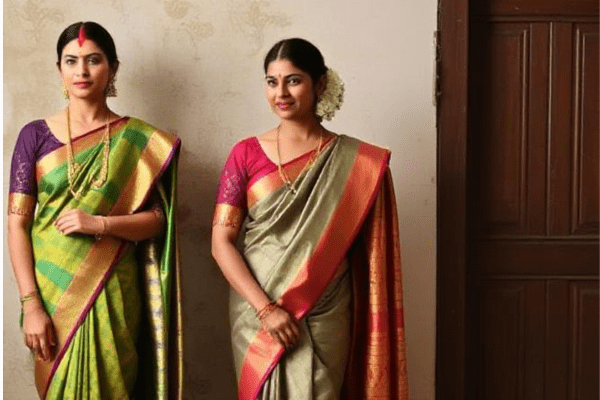
A. Preparing the Saree for the Perfect Drape
Start by gently ironing your saree on low heat to smooth out any creases—this helps the fabric drape beautifully.
Identify the pallu side (the decorated end) and check which is the inner and outer side of the fabric.
Slip into a snug blouse and a well-tied petticoat that matches or complements your saree color.
Keep a few safety pins nearby—they’ll help hold everything in place as you move through the draping steps confidently.
B. Achieving the Classic Madisar Style
Start by tucking one end of the saree at the waist and bringing the fabric between your legs to create natural pleats—no pins needed.
Wrap the length around your waist again, keeping the folds neat and comfortable for easy movement.
Make a set of pleats in front, adjusting them evenly so they sit gracefully and don’t feel bulky.
Drape the loose end over your left shoulder, letting it fall with elegance while keeping everything secure and balanced.
C. The Modern 6-Yard Adaptation for Everyday Wear
Start by tucking the plain end of the saree at your right waist, anchoring it firmly to avoid slips.
Neatly pleat the front—aim for 5 to 7 pleats about a palm’s width wide—and tuck them in at your navel.
Wrap the rest of the fabric around your body, bringing it across your front with smooth, clean folds.
Finally, drape the pallu over your left shoulder and let it fall naturally down your back for that graceful finish.
D. Common Draping Mistakes to Avoid
Make sure your petticoat is tied snugly—if it’s too loose, your saree will keep slipping all day.
Take time with your pleats; uneven folds can make your drape look bulky and messy.
Place the pallu properly so the beautiful border or design isn’t hidden—let it shine!
Don’t go overboard with safety pins; too many looks cluttered, too few means you’ll be adjusting all day. Practice truly makes perfect.
Madisar Silk Saree
Accessorizing Your Tamilnadu Saree Look
Traditional Temple Jewellery That Completes the Look
The Tamilnadu saree style isn’t complete without the glow of traditional temple jewelry—think goddess motifs and bold gold designs.
A Kemp stone choker paired with a silk saree adds instant regal charm rooted in centuries of Tamil craftsmanship.
Swinging jhumkas, layered bangles, and waist belts elevate your entire look with cultural richness and flair.
Every piece tells a story—temple jewellery doesn’t just accessorize your saree, it celebrates Tamil heritage in the most graceful way.
The Significance of the Pottu (Bindi) and Its Placement
That little red dot between the eyebrows is more than a style statement—it represents focus, wisdom, and spiritual balance.
In Tamil tradition, a bold red kumkum pottu often signifies marital status, with some women adding a black dot beneath for protection.
Placement is key: right between the brows—not too high (which looks startled) or too low (which can seem intense).
It’s the final touch that completes a traditional look, adding meaning and identity with just one small, powerful mark.
Hair Styling and Flower Adornments
Tamil women master the art of the perfect kondai—a neatly tied low bun that sits gracefully at the nape of the neck.
Wrapped in strands of fresh jasmine (mullai), it’s more than beautiful—the fragrance soothes the mind and keeps you cool through the day.
The traditional veni style, where flowers fall softly along one side, turns a simple hairstyle into a poetic, cultural statement.
It’s not just tradition—it’s elegance passed down through generations. And yes, your grandmother would totally approve.
Footwear and Other Complementary Accessories
Slide into a pair of gold kolhapuris or embroidered juttis—easy on the feet, rich in tradition.
A silk potli bag or vintage clutch with zari or mirror work keeps your essentials handy and stylish.
Add a delicate waist chain (oddiyanam) to define your silhouette and enhance the saree drape with a regal finish.
These little touches aren’t just accessories—they’re quiet nods to Tamil elegance, tying the whole look together beautifully.
Kovai Cotton Saree
Modern Interpretations of the Tamilnadu Saree Style
Contemporary Designers Reimagining Traditional Patterns
The Tamilnadu saree style has gone through a glow-up—no longer limited to rituals or temples.
Today’s designers are reimagining Tamilnadu sarees with vibrant colors, statement borders, and daring blouse cuts.
Think electric blues with gold zari or half-and-half drapes that blend tradition with bold, modern flair.
It’s about honouring the heritage while turning every step into a fashion moment—grandma-approved with Gen Z swagger.
Fusion Styles for the Modern Woman
Why settle for either tradition or trend when you can confidently own both?
Today’s modern saree styles mix heritage with bold new energy—perfect for the woman who does it all.
Try teaming a classic silk drape with a crop top, cinch it with a belt, or add a structured jacket to turn heads.
From office meetings to evening cocktails, this fusion style adapts effortlessly—all it takes is a quick accessory switch.
Adapting Traditional Styles for Different Body Types
The magic of the right saree drape? It works with your body, not against it.
If you’re petite, go for narrow borders and delicate prints to keep things balanced.
Curvier shapes look gorgeous with pleats that cinch and define the waist naturally.
Taller women can totally own the full-length drape—it adds drama in the best way.
Sustainable and Ethical Choices in Tamilnadu Sarees
The saree world is going beyond just looking good—it’s becoming more thoughtful too.
Eco-conscious Tamilnadu sarees now feature natural dyes, handwoven fabrics, and earth-friendly processes.
Local artisans and weaving communities are gaining fresh recognition as buyers lean into meaningful fashion.
These sustainable sarees aren’t just stylish—they’re soulful, keeping age-old traditions alive while respecting the planet.
Sungudi Cotton Saree
Occasions and Celebrations for Tamilnadu Saree Styles
A. Wedding and Bridal Traditions
Tamil brides truly glow in rich, vibrant silks—often deep reds or maroons woven with intricate gold work.
Their sarees are draped in a traditional style that speaks of heritage, symbolizing blessings, prosperity, and feminine strength.
No bridal look is complete without layers of antique gold jewelry, each piece echoing stories from the past.
And the finishing touch? Strings of fresh jasmine tucked into her hair, tying together beauty and tradition in one timeless look.
B. Festival-Specific Saree Styles
Festivals in Tamil culture aren’t just celebrated—they’re worn. During Pongal, women often choose earthy sarees in mustard, green, or deep red, adorned with classic peacock or temple motifs.
Come Diwali, it’s all about shimmer—bright silk sarees with just the right amount of sparkle to match the fireworks.
Navratri brings a beautiful rhythm of color, with women dressing in sarees that follow the traditional shade for each day.
Many still opt for the traditional drape during these occasions, making every celebration feel like a living connection to heritage.
C. Everyday Elegance: Incorporating Traditional Elements in Daily Wear
Who says you need a festival to wear something timeless? Tamil saree style fits beautifully into everyday life too.
Soft cotton sarees with delicate temple borders are perfect for daily wear—comfortable, breathable, and full of quiet elegance.
Working women often go for cotton-silk blends with just a hint of zari—easy to manage yet still rooted in tradition.
Paired with simple drapes and subtle jewellery, these sarees prove that honouring heritage doesn’t mean sacrificing modern comfort.
D. Formal and Professional Settings for the Traditional Look
Tamil sarees aren’t just for celebrations—they mean business too.
Think soft-toned Kanjivarams or silk-cotton blends with just a touch of shimmer—perfect for commanding attention without saying a word.
The classic nivi drape brings structure and grace, ideal for meetings or presentations.
It’s a way to wear your culture with confidence, even while climbing the corporate ladder.
Conclusion
The traditional Tamilnadu saree represents a beautiful blend of cultural heritage and timeless elegance that has evolved over centuries. From understanding the rich history behind these magnificent textiles to mastering the unique draping technique, we’ve explored how these sarees continue to be relevant in contemporary fashion. The essential elements—from the characteristic border patterns to the perfect pleats—combine with traditional accessories to create a look that is both regal and distinctively South Indian.
Whether you’re preparing for a wedding, festival, or simply want to connect with your cultural roots, the Tamilnadu saree offers versatility and grace. By embracing both the traditional aspects and modern interpretations of this draping style, you can honor a centuries-old tradition while expressing your personal style. We encourage you to try this elegant draping method and experience firsthand the cultural richness and beauty that has made the Tamilnadu saree an enduring symbol of South Indian femininity and grace.
Curious about to know state-wise traditional dresses? Please click here.

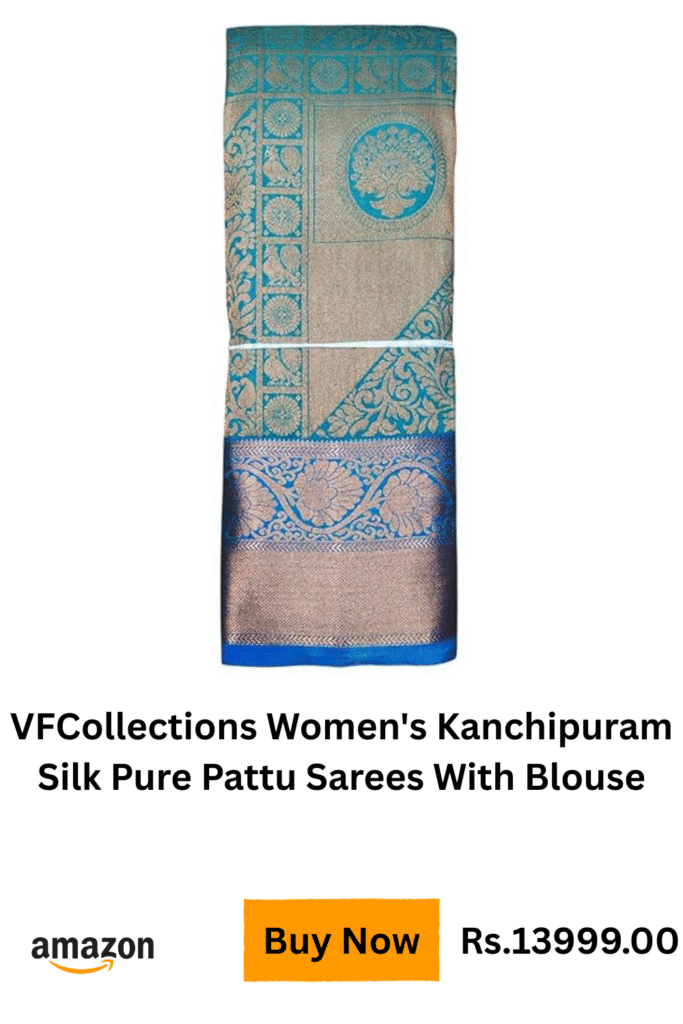
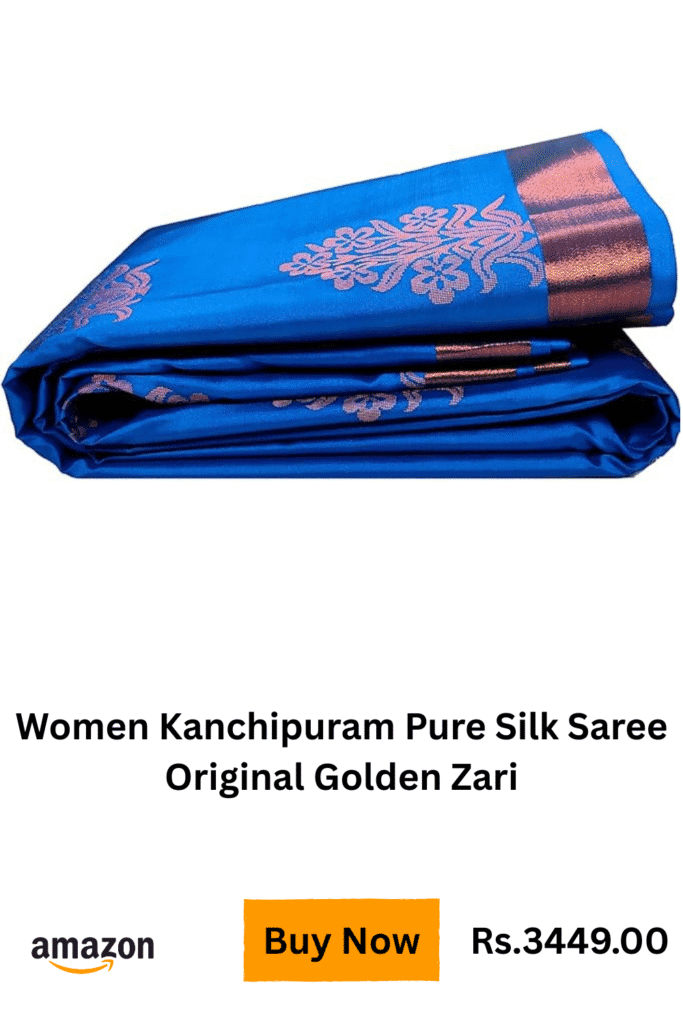
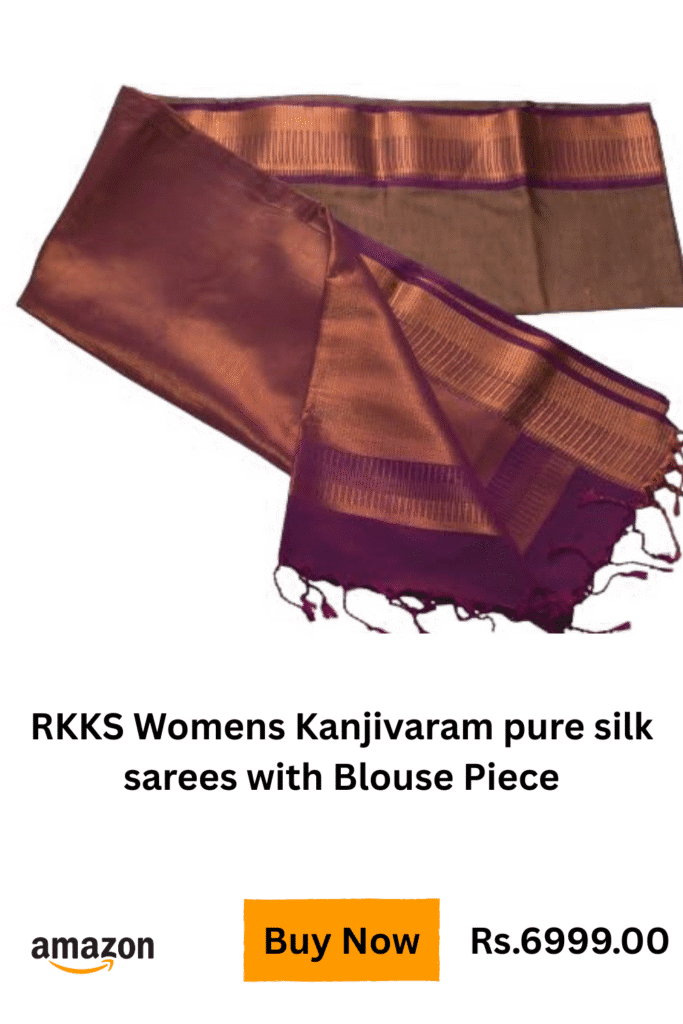
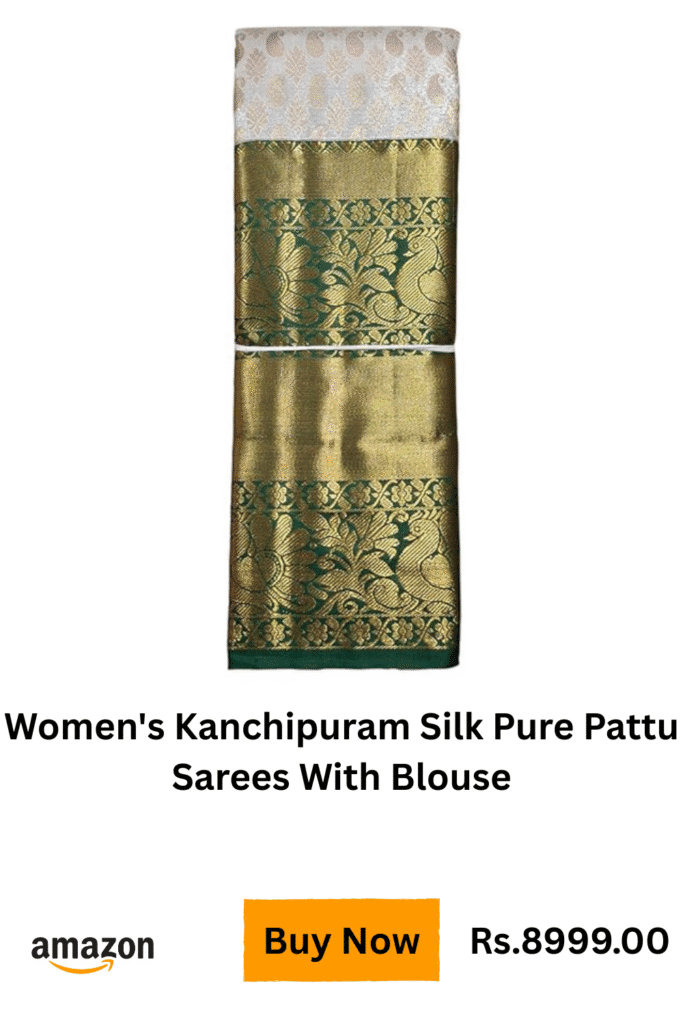
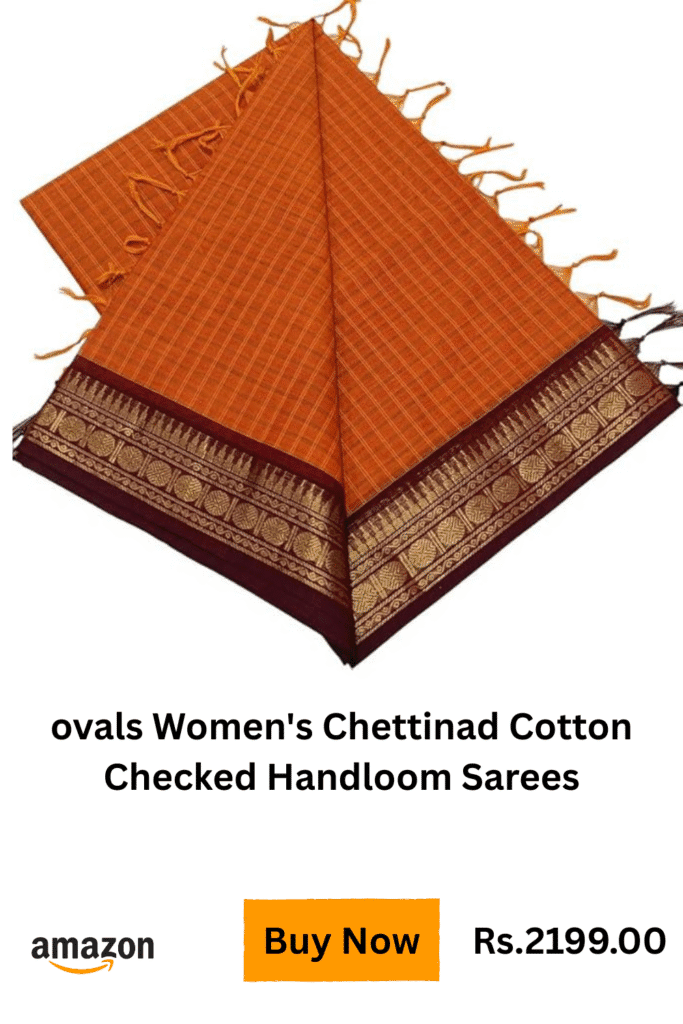
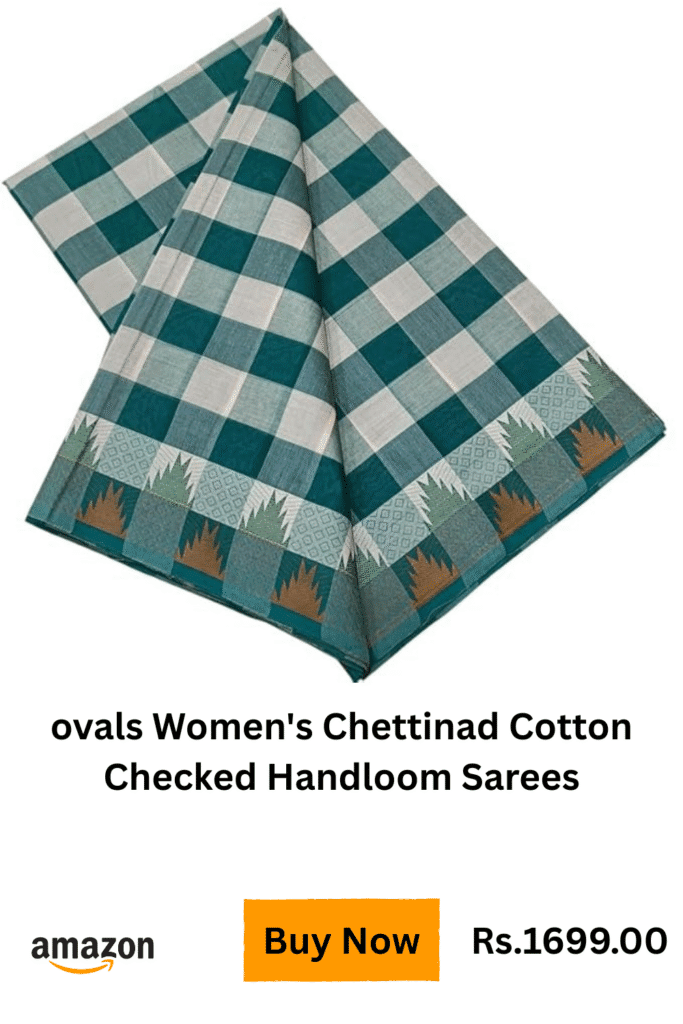
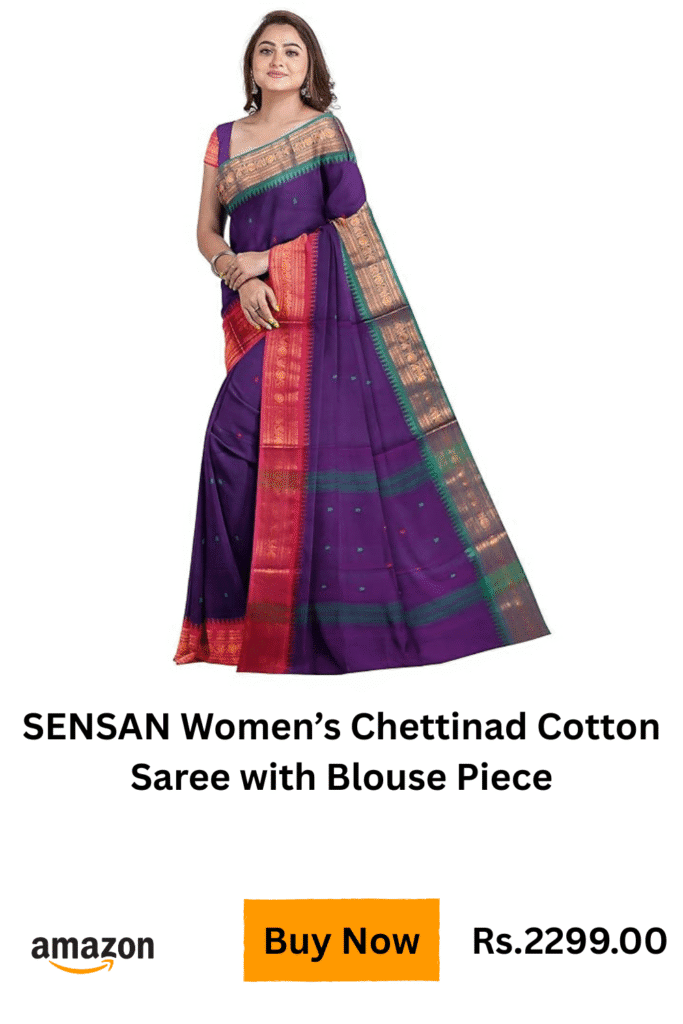
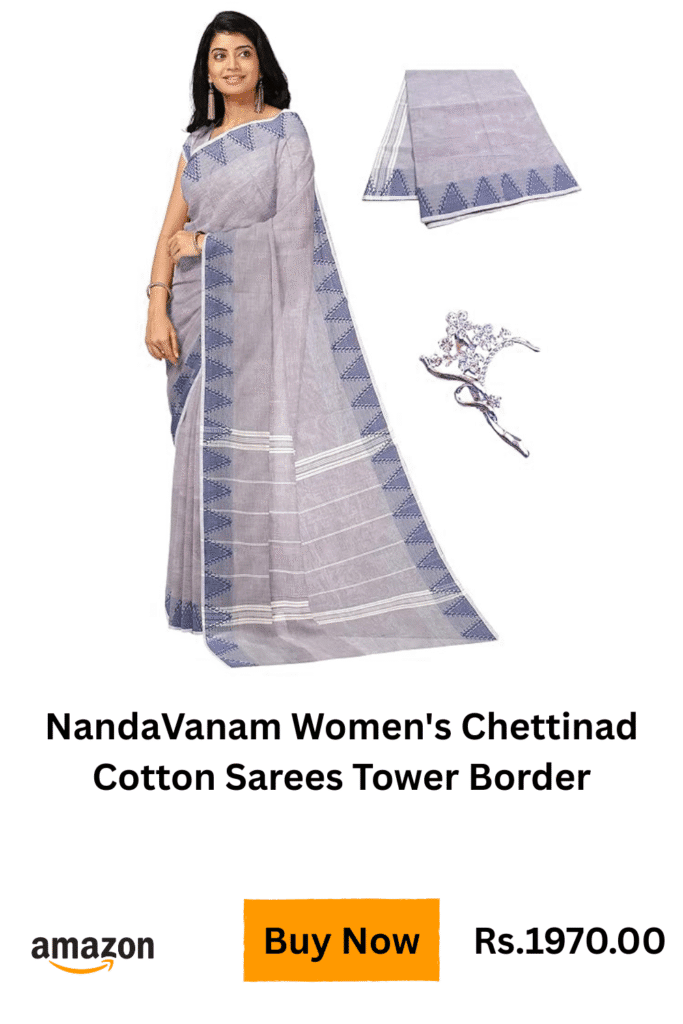
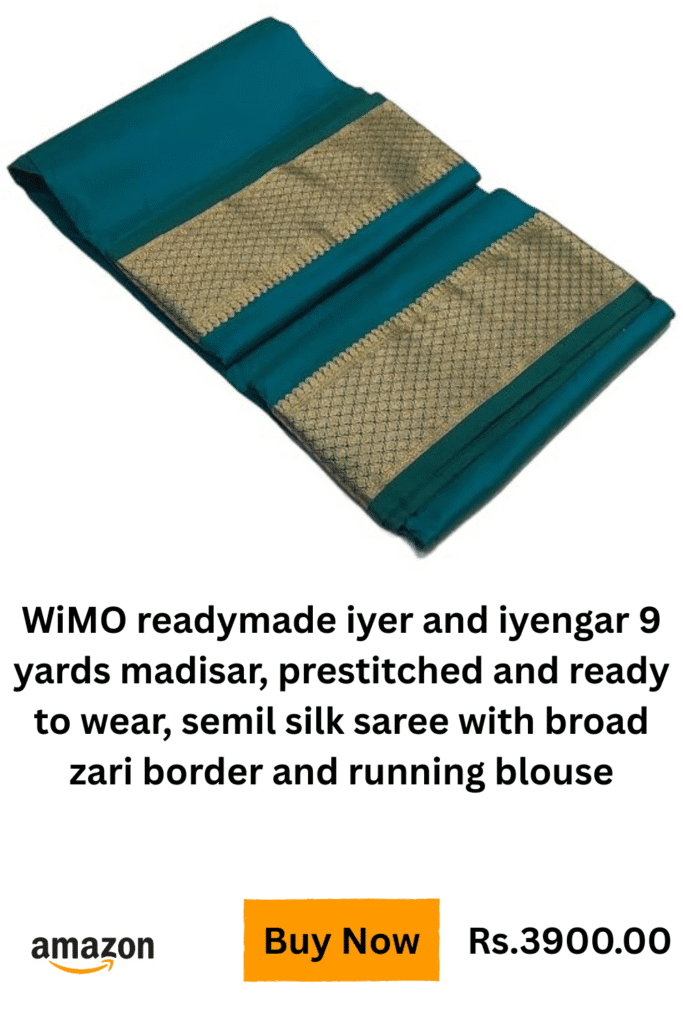
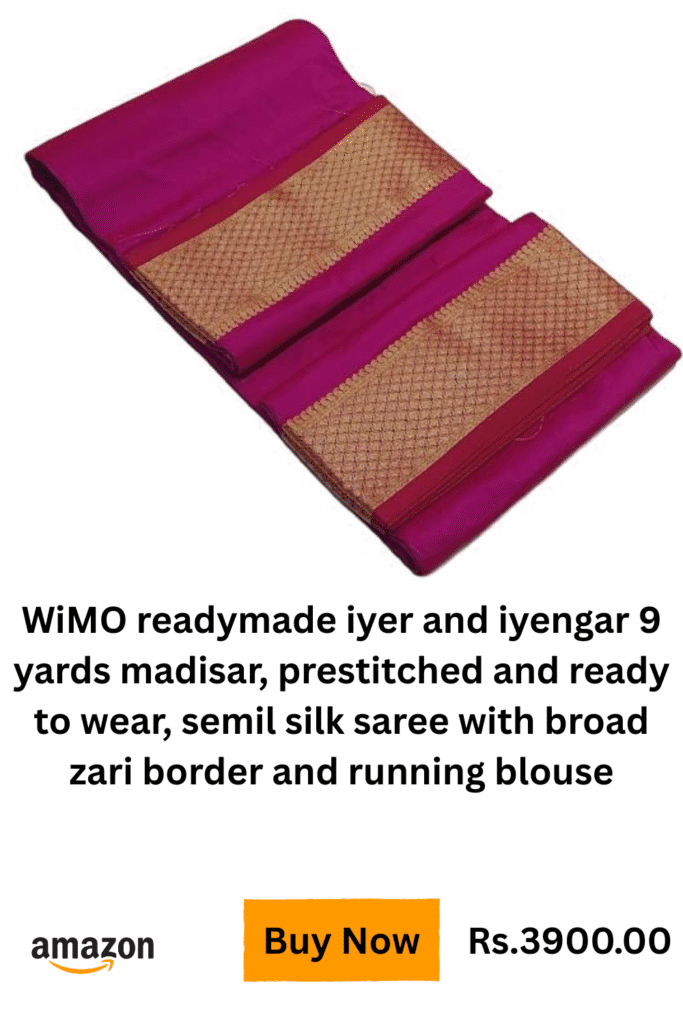
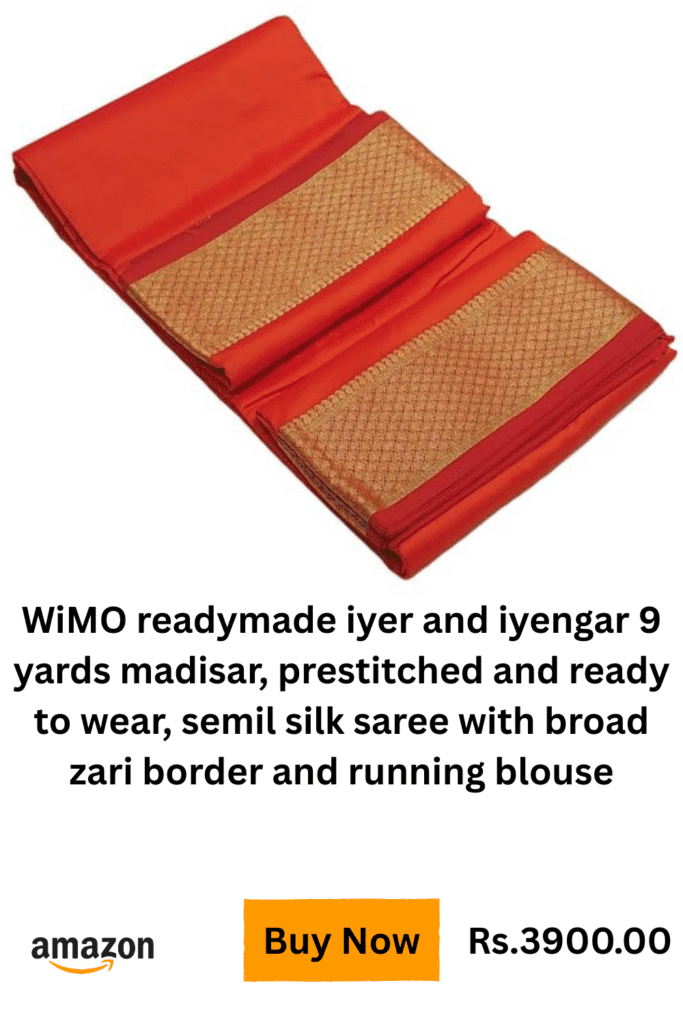
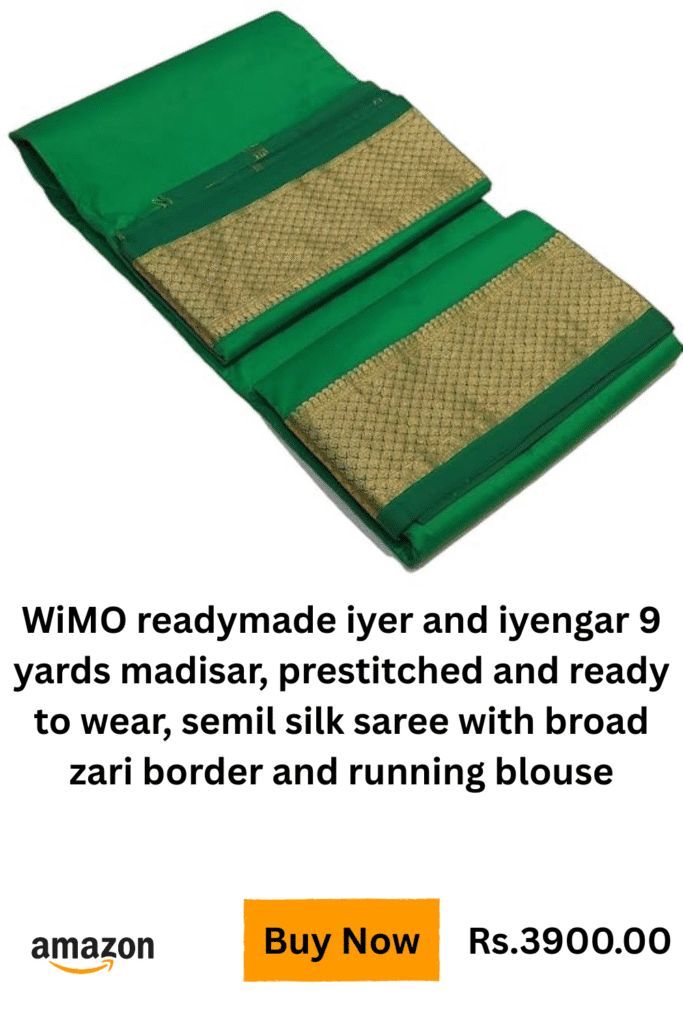
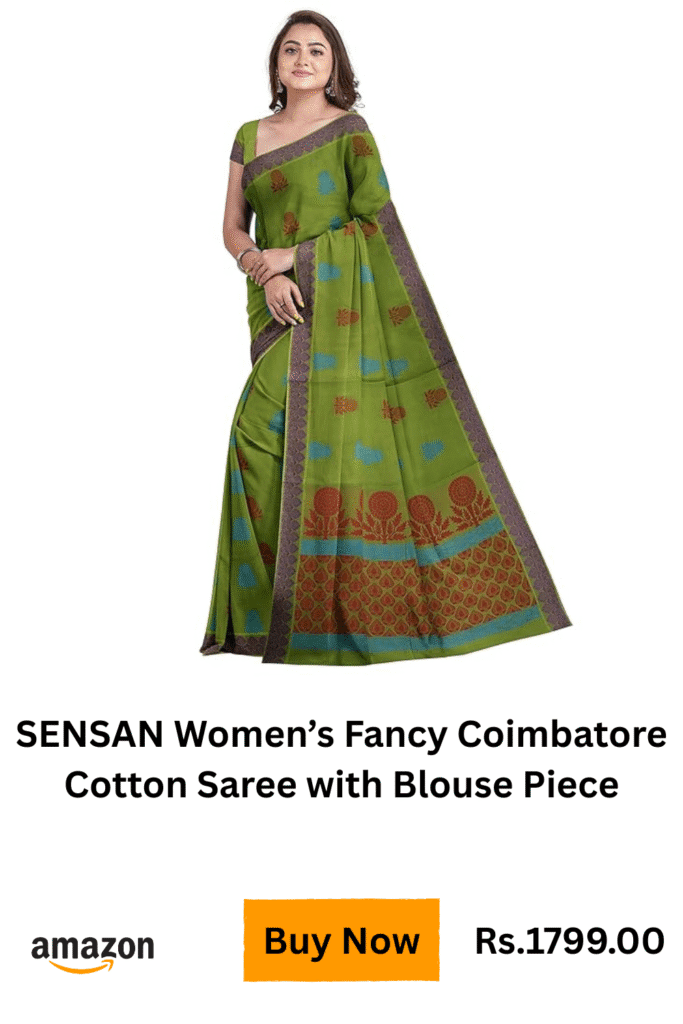
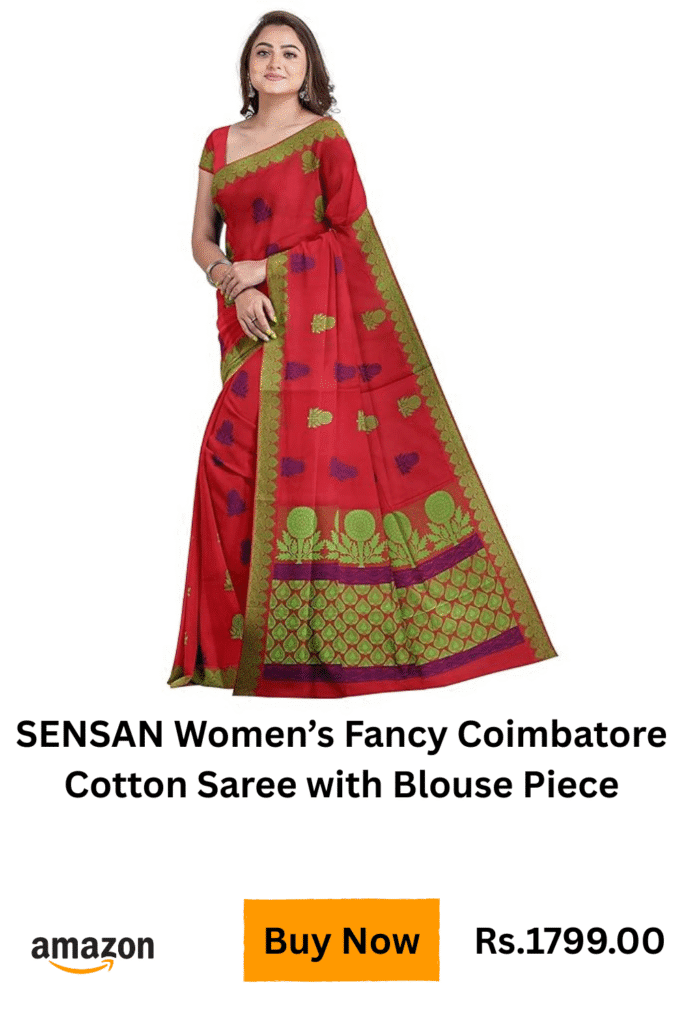
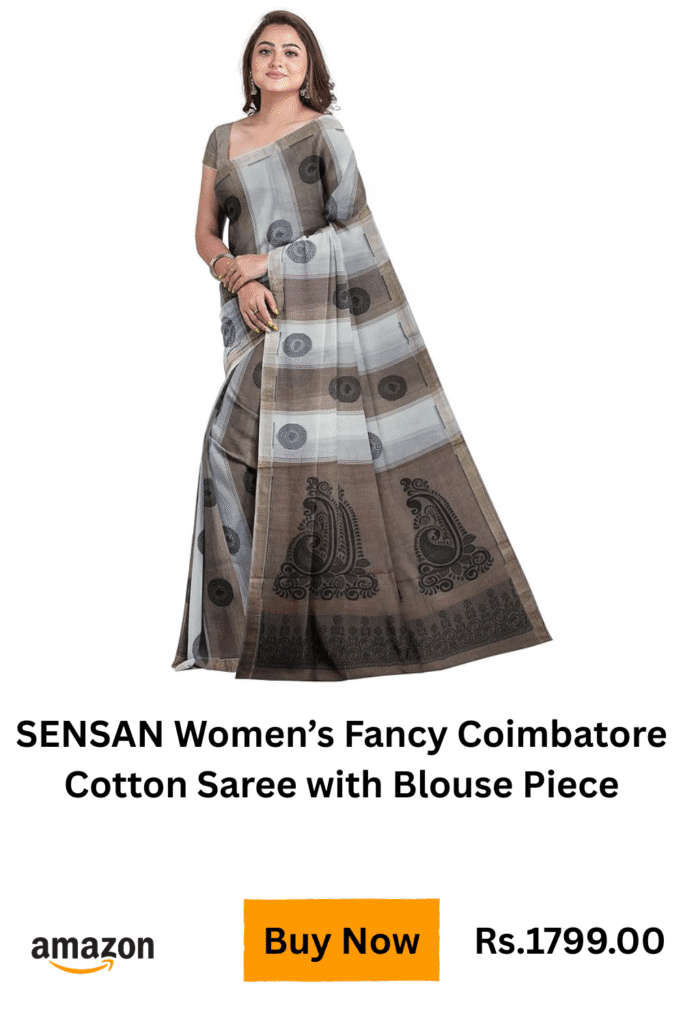
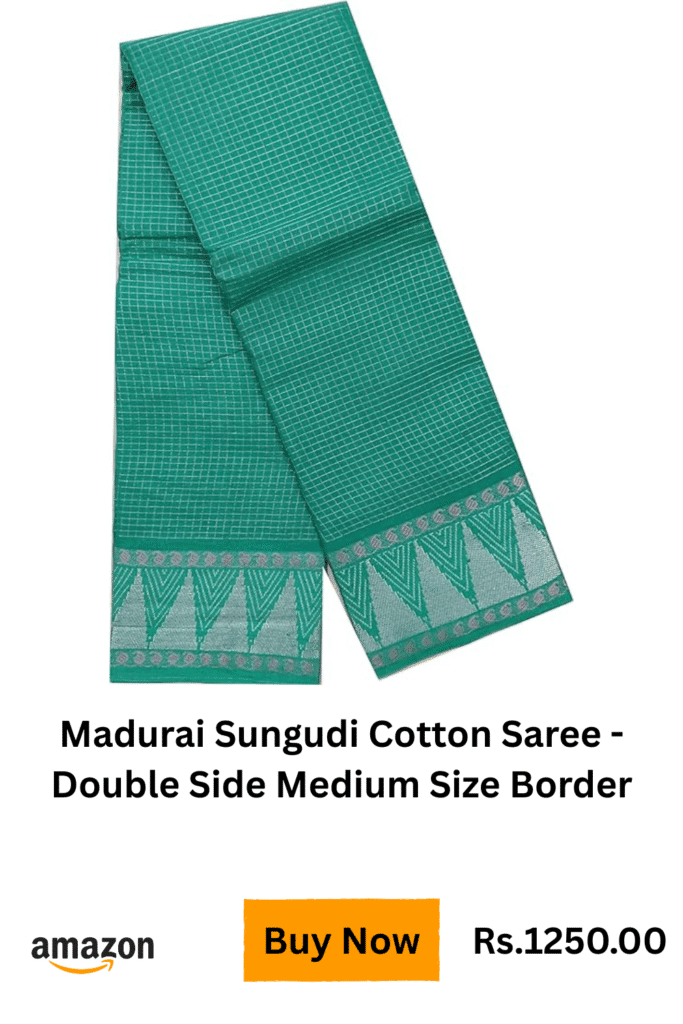
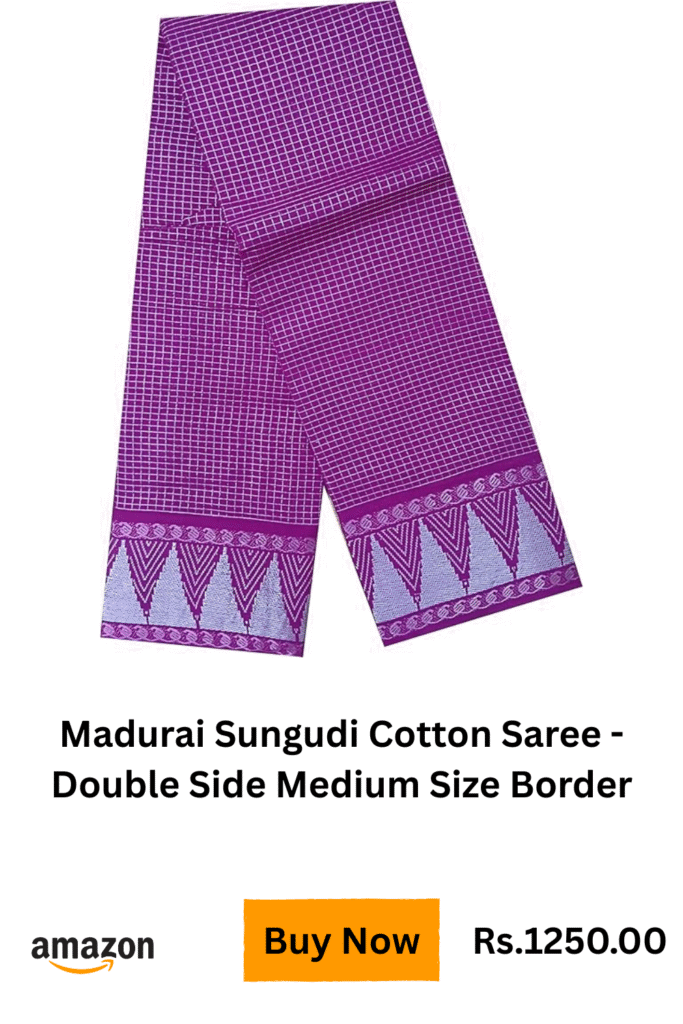
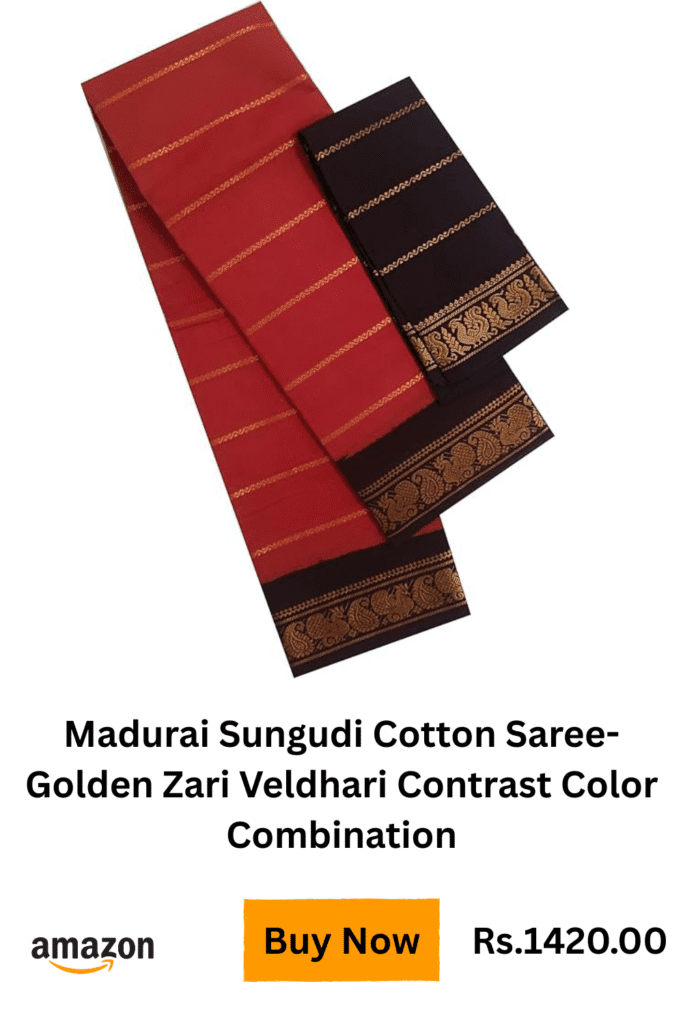
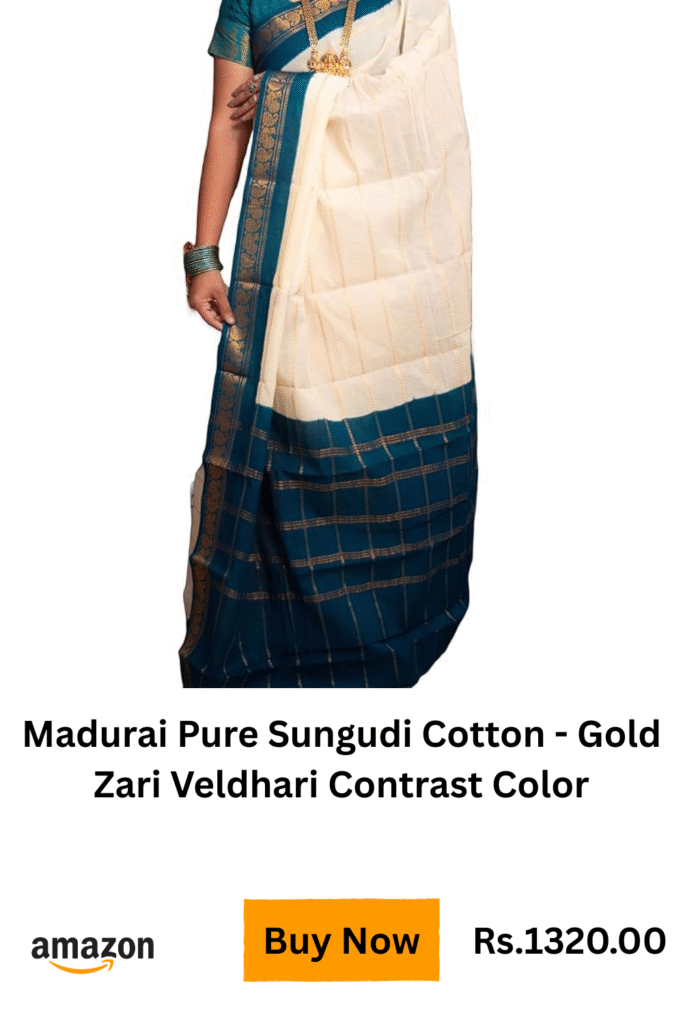
Pingback: Fashion & Fusion: Exploring the Beauty of Fusion Fashion for the Modern Woman - yourfashionblog.com